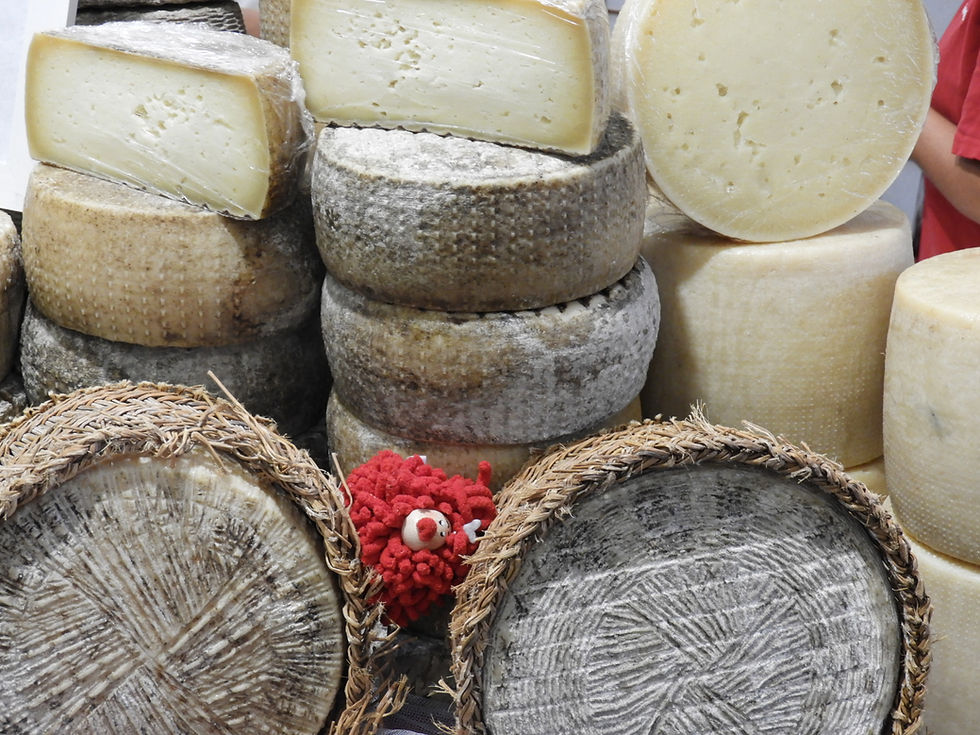Sicily
- Aug 26
- 3 min read
Updated: Sep 23
An Overview of Italy's Largest Island
Introduction
Sicily, the largest island in the Mediterranean, stands as one of Italy's autonomous regions. With an area of 25,708 square kilometers and a population exceeding five million, Sicily is both vast and vibrant. Palermo, the regional capital, leads a group of provinces that include Agrigento, Caltanissetta, Catania, Enna, Messina, Palermo, Ragusa, Siracusa, and Trapani. The island lies just three kilometers east of Calabria, separated by the Straits of Messina.

Cultural Heritage
Sicily boasts a rich and blended culture, renowned for its contributions to the arts, music, literature, cuisine, wine, and architecture. The island’s agricultural heritage is particularly notable, with orange and lemon orchards forming a foundation of the local economy. In recent years, international tourists have begun to appreciate the natural beauty of Sicily's countryside, drawn by its stunning landscapes and vibrant traditions.

Historical and Architectural Landmarks
Sicily is home to a wealth of historic sites, including the Valley of the Temples in Agrigento, the ancient Greek theatre at Taormina, and Roman ruins in Siracusa. The baroque cities of Ragusa, Modica, and Noto also offer visitors remarkable architectural experiences and are highly recommended destinations.
Historical Significance
Throughout its history, Sicily has been a highly sought-after prize, contested by numerous warring nations due to its strategic position along Mediterranean trade routes. Cicero once described Siracusa as the greatest and most beautiful city of all Ancient Greece. Sicily also claims Archimedes, one of antiquity’s greatest mathematicians, as a native son, born in Siracusa.
Natural Wonders
Among Sicily’s most famous natural features is Mount Etna, Europe’s tallest and most active volcano, rising to 3,320 meters near Catania on the island’s eastern side. To the northeast, the Aeolian Islands add to Sicily's geological intrigue, with Stromboli currently active, and Vulcano, Vulcanello, and Lipari now dormant.
Regional Wine and Food
Sicily’s culinary landscape is as distinctive as its scenery, shaped by centuries of tradition and the island’s agricultural bounty. The region is celebrated for its principal grape varieties, including Alcamo, Cerasuolo di Vittoria, Etna Bianco, Etna Rossa, Malvasia delle Lipari, Marsala, Nero d’Avola, and Noto, each yielding wines with unique character and deep local roots. Cheeses such as Provola and Pecorino are staples of the Sicilian table, while specialties like Piacentinu Ennese DOP—a sheep’s milk cheese infused with saffron and characteristic of the Enna area—offer a true taste of the island’s heritage. Pasta lovers will find much to enjoy as well, with traditional shapes such as Anelli, Busiate from Trapani, Cannaruzzini, Cuscusu (couscous), Lasagna cacate, and Catanesella, all reflecting the diverse influences that have shaped Sicily’s remarkable cuisine.

Modern Challenges
Sicily is also known for its history with organized crime. The Cosa Nostra, or Sicilian Mafia, typified by the Corleone family in popular culture, has played a significant role in Sicilian life since the mid-19th century. The struggle between the Mafia and the government reached a tragic low point in 1998 with the assassination of magistrates Giovanni Falcone and Paolo Borsellino near Palermo. Public outrage and a subsequent government crackdown have since curtailed many Cosa Nostra operations.
Personal Reflection
Our first visit to Sicily was in 2007, and the island left a lasting impression. Although it is changing, Sicily remains largely undiscovered by mass tourism. With so much to offer and so much to see, it is a destination I can highly recommend.





Comments